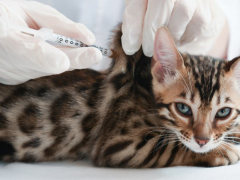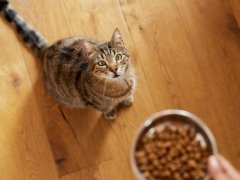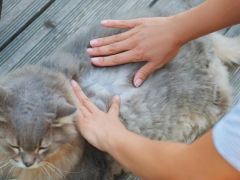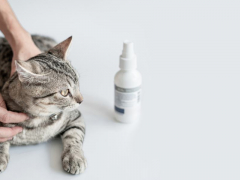
Famotidine, commonly known as the brand Pepcid, is a medication that reduces stomach acid production. In this article, you’ll learn how famotidine works, how effective it may be in cats, potential side effects to watch for, and some frequently asked questions.
Famotidine for Cats Overview

About Famotidine for Cats
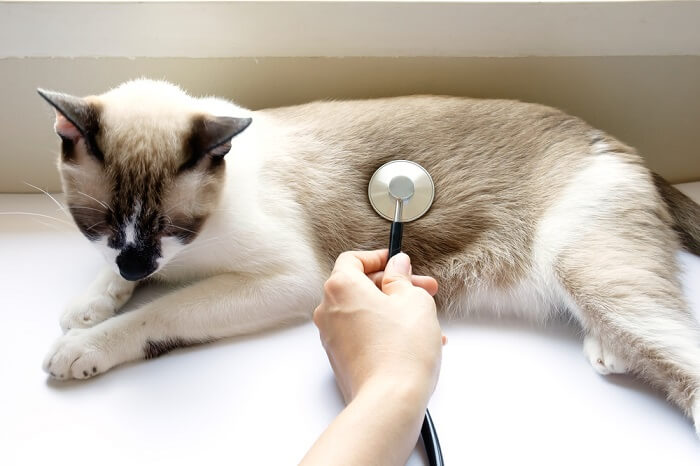
Famotidine is classified as an H2-receptor antagonist.
The “H” in “H2” stands for histamine. Histamine is a chemical produced by the body that many folks think of as what contributes to swollen, red mosquito bites or bee stings on the skin or swelling from allergic reactions.
However, histamine has a role in many parts of the body, not just with allergies. In the GI tract, histamine is released by cells in the stomach, which in turn stimulates parietal cells in the stomach to produce acid that’s needed to break down food.
While a necessary part of digestion, sometimes too much stomach acid may be produced, leading to irritation, indigestion, nausea, and sometimes vomiting. This is essentially what heartburn is in humans, when extra acid passes up the esophagus causing irritation, which is called esophagitis.
An H2-receptor antagonist like famotidine blocks histamine release, which keeps the parietal cells from making acid. This can help bring some relief to stomach acid reflux-related signs.
What Does Famotidine Do for Cats?
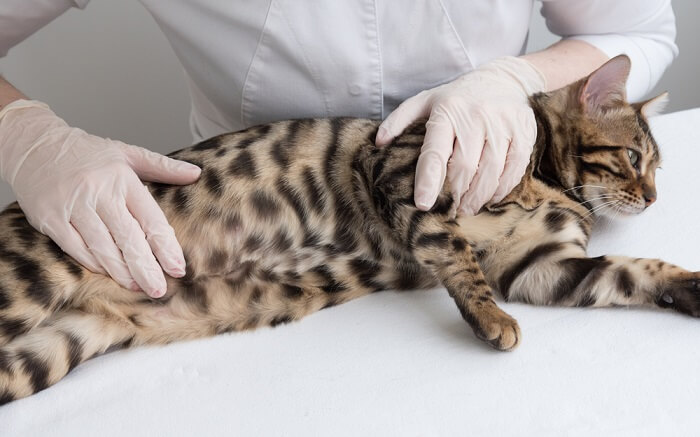
Famotidine is commonly used in pets as part of a comprehensive approach to address signs of nausea, indigestion, vomiting, poor appetite, and other related signs. It may also be used as part of a treatment approach if a cat is suspected of having irritation or ulceration of the stomach lining.
Similarly, famotidine has been used in conjunction with medications that may pose a risk of stomach or intestinal ulceration, like non-steroidal anti-inflammatory (NSAID) medications and steroids.
Famotidine is generally safe to use and has few interactions with other medications, making it a common recommendation sometimes for at-home use for relief of mild signs of digestive upset in cats.
Injectable forms of famotidine may also be used at a veterinary practice coupled with further instructions to use the oral form at home.
However, while famotidine has some good qualities and has been used commonly for a long time, more recent studies have shown that it may not be the most effective medication available for reduction of stomach acid production.
In both dogs and cats, use of famotidine over 14 days demonstrated a diminishing effect on the acidity of the stomach, suggesting it may have reduced efficacy the longer it’s used.
It is now more common to see use of proton pump inhibitors, including pantoprazole and omeprazole, which are thought to be more effective at suppressing stomach acid production, normalizing the pH of the stomach, and acting as a preventative for the risk of stomach ulcers.
Side Effects of Famotidine for Cats
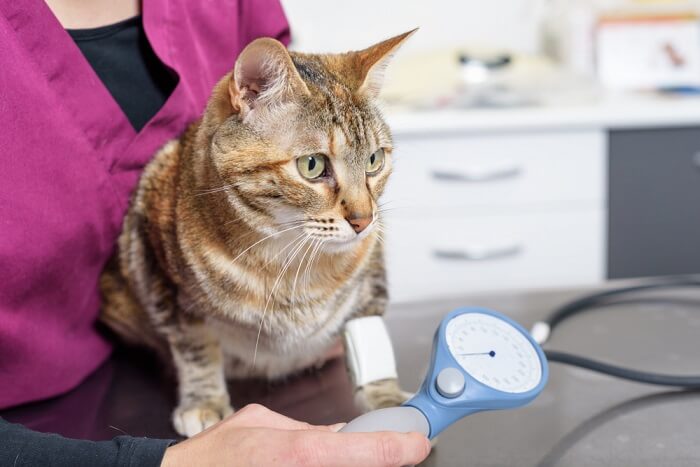
Generally, oral famotidine is very safe and has a wide margin of safety. It is very rare to see a cat develop any side effects from appropriately used doses. Even small overdoses, like an extra accidental dose during the day will typically not cause issues.
Massive oral overdoses, while very rare, may lead to vomiting, restlessness, and heart-related changes like changes in heart rate and blood pressure.
If you are ever concerned that your kitty may have developed side effects while taking famotidine, make sure to contact your veterinarian, the ASPCA Animal Poison Control Center (1-888-426-4435), or Pet Poison Helpline (1-855-764-7661) for further advice.
Famotidine may need to be used very carefully in cats with severe kidney disease or severe heart disease.
Famotidine has few interactions with other medications, but always make your veterinarian aware of any medications your cat is taking when discussing the start of a new medication.
Since famotidine is an over the counter product, always be cautious of combination products, like those containing calcium carbonate and magnesium hydroxide. Supplementing additional calcium when not needed can cause concerns.
Famotidine for Cats Dosage
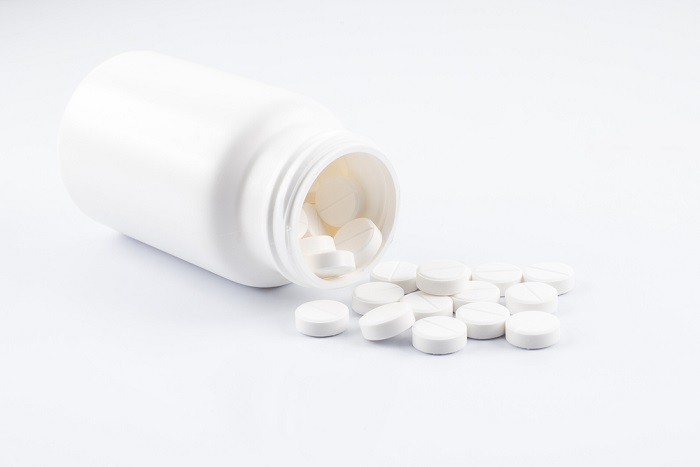
Famotidine is not labeled for use in cats, though extra-label use of over the counter Pepcid or other generic brands is common.
The most common dose for a majority of cats is 5mg every 12 to 24 hours.
Every 24 hours administration is more often recommended for cats with severe kidney or heart disease.
This dosing is thought to be subtherapeutic for many patients, but higher doses are also not found to be more effective.
It’s very important to keep in mind that famotidine may have a mild effect if any on digestive issues for cats. If your cat is having persistent GI signs, scheduling an exam with your veterinarian is best versus continued use of over the counter products.
Conclusion
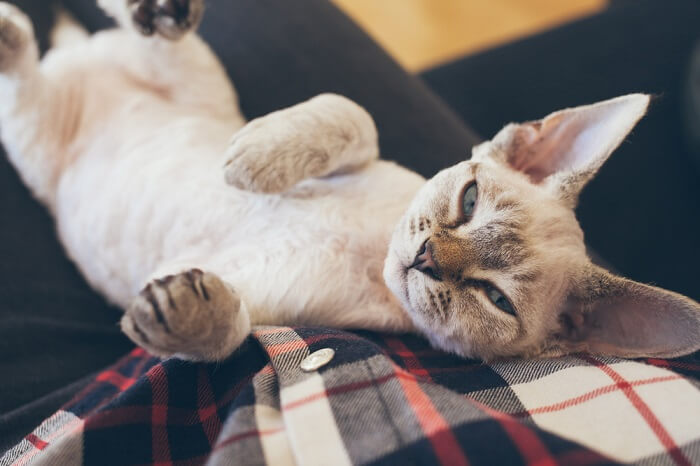
While typically very safe to use orally in cats, and used commonly, famotidine is less likely to be an ideal choice, especially on its own, to address GI signs like nausea, poor appetite, or vomiting in cats. If your cat does have signs like these, an exam with a vet is a better step to take to get a diagnosis and advice on what treatment approaches will be most effective.
Drug Dosing Disclaimer: We are only able to provide doses for medications that are FDA approved for use in cats and only as the label guidelines dictate. For medications that are used off-label we can only provide guidelines and safety information for use. Safe and appropriate dosing for off-label medications can only be determined by a primary care veterinarian.
We encourage you to work with your veterinarian to determine if a particular medication is appropriate for your cat. Changing or adjusting a dose for your cat on your own without consulting with a veterinarian can carry risk. We do not encourage use of medications prescribed for human use in pets without first consulting with a primary care veterinarian.
